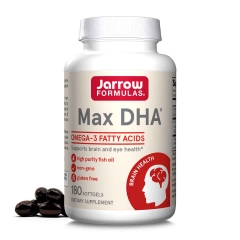-
 Thanh toán đa dạng, linh hoạtChuyển khoản ngân hàng, thanh toán tại nhà...
Thanh toán đa dạng, linh hoạtChuyển khoản ngân hàng, thanh toán tại nhà... -
 Miễn Phí vận chuyển 53 tỉnh thànhMiễn phí vận chuyển đối với đơn hàng trên 1 triệu
Miễn Phí vận chuyển 53 tỉnh thànhMiễn phí vận chuyển đối với đơn hàng trên 1 triệu -
 Yên Tâm mua sắmHoàn tiền trong vòng 7 ngày...
Yên Tâm mua sắmHoàn tiền trong vòng 7 ngày...
Catalinbread Csidman Glitch Stutter Delay Guitar Effects Pedal
-

- Mã sản phẩm: B01EY1NJ2Q
- (147 nhận xét)

- Item Weight:8 ounces
- Product Dimensions:5 x 3 x 3 inches
- Country of Origin:USA
- ASIN:B01EY1NJ2Q
- Item model number:CSIDMAN
- Customer Reviews:4.4 out of 5 stars 145Reviews
- Best Sellers Rank:#20,414 in Musical Instruments (See Top 100 in Musical Instruments) #5,467 in Guitar & Bass Accessories
- Is Discontinued By Manufacturer:No
- Date First Available:April 29, 2016
- Color Name:Yellow
- Voltage:9 Volts
- Controls Type:Knob
- Signal Format:Analog

Tính năng sản phẩm
• TIME: Controls the echo delay line’s delay time up to 725mS, as well as the rate of the glitch.• MIX: Gives you control over the wet/dry balance from 100% wet to 100% dry.• FEED: Controls the amount of feedback going back into the unit.• CUTS: (used in conjunction with the LATCH knob) controls the buffer memory length.• LATCH: controls the relative time in a cycle that the CSIDMAN is in a latching skipping state.Mô tả sản phẩm
From the manufacturer

Catalinbread CSIDMAN Effects Pedal

Features:
- Digital is the CSIDMAN’s aesthetic: as a delay pedal, it strives to reproduce echoes as true to the input as possible without filtering.
- When you utilize its scratched disc, stuttery, and glitchy behaviors, it is pseudo-random, yet gives you a certain amount of “control” over the randomness.
- Based on an old, skipping portable CD player, the CSIDMAN incorporates those effects into a digital delay pedal that not only does typical delay sounds, but also skips, stutters, and glitches!
- As you skip through the multiple settings (i.e. feed, cuts, latch), you can fully appreciate what the CSIDMAN is intending.

Emoclew ot eht NAMDISC!
The first thing to keep in mind about the CSIDMAN is that it completely embraces and makes no apologies for the fact that it is digital (though it does have a 100% analog dry path). Digital is the CSIDMAN’s aesthetic: as a delay pedal, it strives to reproduce echoes as true to the input as possible without filtering. When you utilize its scratched disc, stuttery, and glitchy behaviors, it is pseudo-random, yet gives you a certain amount of 'control' over the randomness. We've taken the idea of your old skipping portable CD player and incorporated it into a digital delay pedal that not only does normal delay sounds (at CD quality) but can also skip, stutter, and glitch just like your beloved old CD player!
You can power your CSIDMAN with any quality power supply designed for use with effects pedals. The output should be a negative tip DC from 9 to 18 volts. The CSIDMAN does not run on batteries. If you want more volume, headroom, and percussive attack, try running an 18 volt power supply. A 9 volt power supply will have a slightly softer sound that saturates more easily.
Quick Start: Plug your instrument into the CSIDMAN and directly into your amplifier. To begin, set your latch knob full counter-clockwise. For now ignore the cuts knob, and use your time, mix, feed knobs to dial in traditional delay sounds. Now that you have dialed up a conventional digital delay sound let's make it glitch by turning up the latch a bit. Keep playing a staccato chord to hear how every repeat cycle randomly glitches. Turning CUTS counter-clockwise makes the slices bigger, turning it clockwise makes the slices smaller.
Spend some time here and really pay attention to what the feed, cuts and latch knobs are controlling as they are all codependent. The higher the feed setting, the more the latch control will be affected, etc. As you are skip-p-ping through these settings you can fully appreciate what the CSIDMAN is intending, as the behavior is completely random and outside your control. There are a variety of other sounds available, utilizing different ratios of feed, cuts and latch. Keeping in mind any adjustments you make to the feed, cuts or latch controls may still yield responses that manifest in a random way.

Feed
Controls the amount of feedback going back into the unit.

Cuts
(Used in conjunction with the latch knob) Controls the buffer memory length.

Latch
Controls the relative time in a cycle that the CSIDMAN is in a latching skipping state. When full counterclockwise, it doesn’t skip, allowing you to use the pedal as a traditional digital delay. When full clockwise, the unit is stuck repeating whatever is in the buffer memory. At noon, this knob is a 50/50 balance (though random) between a skip-playback state and non-skip sample state.

Mix
Gives you control over the wet/dry balance from 100% wet to 100% dry.

Powering Up the CSIDMAN
The output should be a negative tip DC from 9 to 18 volts. The CSIDMAN does not run on batteries. If you want more volume, headroom, and percussive attack, try running an 18 volt power supply. A 9 volt power supply will have a slightly softer sound that saturates more easily.

Time
Controls the echo delay line’s delay time up to 725mS, as well as the rate of the glitch.

Designer's Notes
I was first introduced to glitch/stutter effects through that ridiculous Jonny Greenwood video a number of years ago. For years in the back of my head I puzzled over an application for such musical cacophony. I mean it is an over the top freakout for peak climactic moments in a performance where the music seems that it cannot rave-up any further.
Cool, that’s a one trick pony, right? Well, not at all. It came together when I realized the potential for this sort of effect to dice up familiar gentle sounds, in an uncomfortable yet beautiful way. I was reminded of an effect my friend and guitarist Paul Rigby (Neko Case, Garth Hudson) asked me for, something that sounded and intermittent like broken cable. Having spent time listening to Paul play. The economy, restraint and subtlety that he plays with fits almost within the subconscious of music in such a way that when he’s not playing everything sounds naked and vacant. There’s something here for these applications...
Somewhere along the way, creatives exploit and embrace the way that limitations of technologies impose themselves. Imposing their ways much like a collaborator would, a creative will often find themselves in a love/hate relationship that they can’t imagine living without. What is the reason that musicians still use tape-based echo devices in an age where digital is nearly technically 'perfect'?
Wow and flutter, limited fidelity, and distortion are the hallmarks of tape technology that were engineered out over time, but musicians still often prefer tape because it adds 'character' to their sound. So I got to thinking, “What are the artifacts of other antiquated technologies that have merit in a musical context? If David Byrne can find a way to use Powerpoint in an artistic way, why can’t we create a pedal that intentionally embraces technological limitations that musicians haven’t widely utilized?”
-Nicholas Harris
The first thing to keep in mind about the CSIDMAN is that it completely embraces and makes no apologies for the fact that it is digital (though it does have a 100% analog dry path). Digital is the CSIDMAN’s aesthetic: as a delay pedal, it strives to reproduce echoes as true to the input as possible without filtering. When you utilize its scratched disc, stutter, and glitch behaviors, it is pseudo-random, yet gives you a certain amount of “control” over the randomness.
- Mua astaxanthin uống có tốt không? Mua ở đâu? 29/10/2018
- Saffron (nhụy hoa nghệ tây) uống như thế nào cho hợp lý? 29/09/2018
- Saffron (nghệ tây) làm đẹp như thế nào? 28/09/2018
- Giải đáp những thắc mắc về viên uống sinh lý Fuji Sumo 14/09/2018
- Công dụng tuyệt vời từ tinh chất tỏi với sức khỏe 12/09/2018
- Mua collagen 82X chính hãng ở đâu? 26/07/2018
- NueGlow mua ở đâu giá chính hãng bao nhiêu? 04/07/2018
- Fucoidan Chính hãng Nhật Bản giá bao nhiêu? 18/05/2018
- Top 5 loại thuốc trị sẹo tốt nhất, hiệu quả với cả sẹo lâu năm 20/03/2018
- Footer chi tiết bài viết 09/03/2018
- Mã vạch không thể phân biệt hàng chính hãng hay hàng giả 10/05/2023
- Thuốc trắng da Ivory Caps chính hãng giá bao nhiêu? Mua ở đâu? 08/12/2022
- Nên thoa kem trắng da body vào lúc nào để đạt hiệu quả cao? 07/12/2022
- Tiêm trắng da toàn thân giá bao nhiêu? Có an toàn không? 06/12/2022
- Top 3 kem dưỡng trắng da được ưa chuộng nhất hiện nay 05/12/2022
- Uống vitamin C có trắng da không? Nên uống như thế nào? 03/12/2022
- [email protected]
- Hotline: 0909977247
- Hotline: 0908897041
- 8h - 17h Từ Thứ 2 - Thứ 7
Đăng ký nhận thông tin qua email để nhận được hàng triệu ưu đãi từ Muathuoctot.com
Tạp chí sức khỏe làm đẹp, Kem chống nắng nào tốt nhất hiện nay Thuoc giam can an toan hiện nay, thuoc collagen, thuoc Dong trung ha thao , thuoc giam can LIC, thuoc shark cartilage thuoc collagen youtheory dau ca omega 3 tot nhat, dong trung ha thao aloha cua my, kem tri seo hieu qua, C ollagen shiseido enriched, và collagen shiseido dạng viên , Collagen de happy ngăn chặn quá trình lão hóa, mua hang tren thuoc virility pills vp-rx tri roi loan cuong duong, vitamin e 400, dieu tri bang thuoc fucoidan, kem chống nhăn vùng mắt, dịch vụ giao hang nhanh nội thành, crest 3d white, fine pure collagen, nên mua collagen shiseido ở đâu, làm sáng mắt, dịch vụ cho thue kho lẻ tại tphcm, thực phẩm tăng cường sinh lý nam, thuoc prenatal bổ sung dinh dưỡng, kem đánh răng crest 3d white, hỗ trợ điều trị tim mạch, thuốc trắng da hiệu quả giúp phục hồi da. thuốc mọc tóc biotin























 KHUYẾN MÃI LỚN
KHUYẾN MÃI LỚN Hỗ Trợ Xương Khớp
Hỗ Trợ Xương Khớp Bổ Não & Tăng cường Trí Nhớ
Bổ Não & Tăng cường Trí Nhớ Bổ Sung Collagen & Làm Đẹp
Bổ Sung Collagen & Làm Đẹp Bổ Thận, Mát Gan & Giải Độc
Bổ Thận, Mát Gan & Giải Độc Chăm Sóc Sức khỏe Nam Giới
Chăm Sóc Sức khỏe Nam Giới Chăm Sóc Sức khỏe Nữ Giới
Chăm Sóc Sức khỏe Nữ Giới Chăm sóc Sức khỏe Trẻ Em
Chăm sóc Sức khỏe Trẻ Em Thực Phẩm Giảm Cân, Ăn Kiêng
Thực Phẩm Giảm Cân, Ăn Kiêng Bổ Sung Vitamin & Khoáng Chất
Bổ Sung Vitamin & Khoáng Chất Bổ Tim Mạch, Huyết Áp & Mỡ Máu
Bổ Tim Mạch, Huyết Áp & Mỡ Máu Bổ Mắt & Tăng cường Thị lực
Bổ Mắt & Tăng cường Thị lực Điều Trị Tai Mũi Họng
Điều Trị Tai Mũi Họng Sức Khỏe Hệ Tiêu hóa
Sức Khỏe Hệ Tiêu hóa Chăm Sóc Răng Miệng
Chăm Sóc Răng Miệng Chống Oxy Hóa & Tảo Biển.
Chống Oxy Hóa & Tảo Biển.